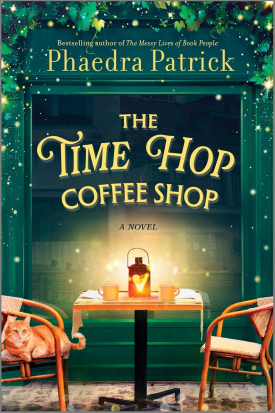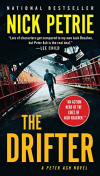Malala Yousafzai Books In Order
Book links take you to Amazon. As an Amazon Associate I earn money from qualifying purchases.Publication Order of Non-Fiction Books
| I Am Malala | (2012) | Description / Buy at Amazon |
| I Am Malala: How One Girl Stood Up for Education and Changed the World | (2014) | Description / Buy at Amazon |
| We Are Displaced | (2018) | Description / Buy at Amazon |
| Malala: My Story of Standing Up for Girls' Rights | (2018) | Description / Buy at Amazon |
| Malala Speaks Out | (2023) | Description / Buy at Amazon |
| Finding My Way | (2025) | Description / Buy at Amazon |
| I Am Malala: The Story of the Girl Who Stood Up for Education and Was Shot by the Taliban was re-written into I Am Malala: How One Girl Stood Up for Education and Changed the World for younger readers. | ||
Publication Order of Children's Books
| Malala's Magic Pencil | (2017) | Description / Buy at Amazon |
| My Name Is Malala | (2022) | Description / Buy at Amazon |
Malala Yousafzai is best known as a Pakistani activist and the youngest winner of the Nobel prize. She was born in Mingora in the Swat Valley in 1997 to Tor Pekai and Ziauddin Yousafzai.
From when Malala was very young, she showcased a thirst for knowledge perhaps because her father was very passionate about education. For years, Malala’s father was the head of a large learning institution in Mingora and hence school was always an important part of their family when she was growing up.
Later on, she asserted that her father used to tell all manner of stories about how she used to walk into classes as a toddler. As a ten-year-old in 2007, things deteriorated rapidly in the Swat Valley where she lived with her family.
It was not long before the Taliban moved in and took control of much of the Swat Valley and the community. The rag-tag organization then became the defacto political and social force in much of northwestern Pakistan.
Cultural activities such as watching TV and dancing were banned and girls were prohibited from attending school. In fact, the opposition to girl education was the cornerstone of the Taliban terror campaign.
By 2008, the terror group has destroyed hundreds of schools but Malala was determined to stand up against them as she believed in her right to education. Working with her father, Malala became a huge critic of Taliban policies and in 2009 she began blogging for the Urdu language site of the BBC.
She wrote about life in the Swat Valley including being forced to stay at home and her fears that the beautiful valley she called home would be engulfed in war. Over several months in 2009, Malala’s voice became louder, and together with her father, they would develop a reputation for their fight for girls’ education.
For her activism, she was nominated for the 2011 International Children’s Peace Prize. Malala was also the winner of the National Youth Prize in Pakistan. However, not everyone was pleased with her efforts to change things in the Swat Valley.
In October 2012, she was shot by a Taliban fighter while heading home from school. She was seated on a bus that was flagged down by the Taliban who asked her name and proceeded to fire three shots at her.
She was seriously wounded in the head and was subsequently taken to a Peshawar military hospital before being transferred to a Birmingham ICU unit.
One in the United Kingdom, she underwent multiple surgeries including the repair of several nerves in her face. Luckily, she never suffered any major brain damage and after weeks of therapy and treatment, she started going to school in Birmingham.
Following the shooting, there was an outpouring of global support for Yousafzai and when she turned 16 she spoke at the United Nations in New York.
In 2012, Malala Yousafzai published “I Am Malala” telling of her struggle to promote the freedom of thought and girls’ rights to education in Pakistan. In 2014, she founded the “Malala Fund” alongside her father.
Since then, she has been to Nigeria to support girls that had been kidnapped by Boko Haram, to Kenya to meet young female students, and to Syria to meet refugees of the Syrian civil war.
She was named a Noble Peace Prize Winner in October 2014 alongside Kailash Satyarthi an Indian children’s rights activist. Today, her organization has helped all manner of girls attain their potential and become strong and confident leaders in their own countries.
Malala currently makes her home in Birmingham and continues to promote education as a fundamental economic and social right.
“I Am Malala” by Malala Yousafzai was written by the then 16-year-old girl determined to show that both girls and boys have the same right to schooling.
In Pakistan, she was under a lot of pressure to stop going to school when the Taliban took over her home province. She writes that the Taliban came in the night like vampires armed with Kalashnikovs and knives looking so dirty and dark that they were described as people deprived of barbers and baths.
The Taliban then proclaimed that girls should not go to school and this was when her father who was a school principal encouraged her to actively speak out against the organization. She spoke out loudly and with courage but this only attracted the Taliban who began making threats against her and her family.
The turning point was when she was riding on the bus with her friends and several Taliban boarded it and proceeded to shoot her in the head. Against all odds, she survived and would later move to the United Kingdom with her family.
Malala now works to raise awareness of the rights of marginalized groups and particularly girls;’ education across the globe.
Malala Yousafzai’s “We Are Displaced” introduces some of the people behind the major news and statistic we usually hear about displacement from across the world. She is well placed to talk about such issues and this made her start thinking a lot about her experiences as an Internally Displaced Person while she was living in Pakistan.
“We Are Displaced” is part communal storytelling and part memoir as Malala Yousafzai explores her own story and in addition, also shares the stories of the many girls she met all over the world. These are girls that have lost their relatives, their community, and many times the only world they ever knew.
In a time of border conflicts, war, and immigration crises this work is an important reminder of the plight of millions that are currently displaced and can’t achieve their dreams and hopes.
She looks into some shocking atrocities and the violence visited on innocent people who have to be strong to survive and seek education as their salvation and hope.
Malala’s “Magic Pencil,” tells the story of Malala Yousafzai while growing up as a child in Pakistan. She desired to have a magic pencil so that she could write a different reality for herself in which she sleeps an extra hour in the morning, erase the dank stench of garbage from her town, and make every happy.
But the older she grew, the more she found more important things she desired other than a magic pen. She realized that she needed to work hard to make her wishes come true and fix the world.
The work beautifully, gently, gracefully, and poignantly showcases the importance of education. Malala shows the importance of love and support from family, even if she says that her philosophy and thoughts, her desires, and wishes for education are for the most part her own.
While her father is just as invested in girls’ education and rights, she does not mimic or just repeat his considerations and ideals. It is a beautiful volume for kids that tells the author’s story but is targeted at a young audience.



 Any issues with the book list you are seeing? Or is there an author or series we don’t have? Let me know!
Any issues with the book list you are seeing? Or is there an author or series we don’t have? Let me know!